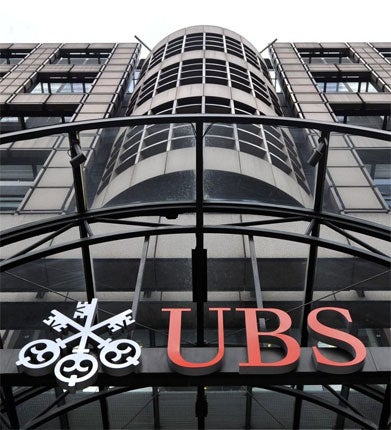With millions invested in risk control, how could this happen?

Kweku Adoboli is set to take his place in a rogue's gallery of traders who, whether by accident or design, have cost their companies dear. Although it remains unclear exactly how he allegedly lost UBS $2bn, what is apparent is quite how hard it is to cover up a trade once something has gone wrong.
One trader, who has worked in the City for almost a decade, said it would be impossible for most people on a trading floor to manipulate the system to hide losses, and would take "expert, back-office knowledge". So how could this happen?
Banks have invested millions in risk and controls technology and bulked up those divisions to detect rogue trading patterns. Most traders have strict limits on how much of the client's or the bank's own money they can use. Trading positions are scrutinised regularly by the bank's internal software and risk management meetings normally happen every day.
The largest single rogue trader was Jerome Kerviel, whose trading activities came to light in January 2008, costing Société Générale, France's second-largest bank €4.9bn. Kerviel, an expert in the back office, breached five levels of controls, the bank said at his trial, as he bet more than the firm's value on stock exchange futures. He entered false counter-trades to mask losses, help- ed by his knowledge of the systems.
The disgraced trader later wrote: "I overrode the usual methods, loaded false data to disguise gains, as well as losses. In a word, I pushed it to the limit." Last year, he was sentenced to three years in prison.
The unnamed City trader said. "I wouldn't know how to start covering up something like that, nor would most of the others," before continuing: "You could probably get away with it for three days, but you'd definitely be found out after that."
One trader managed to cover up his losses for longer than that. Churchgoing family man and currency trading "star" John Rusnak's deceit lasted between 1997 and 2001, after bets on the yen proved disastrous in the wake of the Asian financial crisis. He managed to conceal losses of $691m from his employer Allfirst Financial with fictional options trades, but was sentenced to seven-and-a-half years in prison when the scheme was discovered. Shortly after, currency traders David Bullen and Vince Ficarra at National Australia Bank, racked up losses of £118m before they, too, were jailed for falsifying trades.
In the wake of Kerviel, banks were quick to bolster their risk systems and personnel to avoid similar problems. While it was tight before, it was even tighter afterwards the trader said. "Try anything, and compliance would be all over you," he added. Yet a year later, London trader Alexis Stenfors overvalued his positions to hide his losses at Merrill Lynch, which ended up at £228m.
Perhaps the most famous rogue trader was Nick Leeson. His activities led to the collapse of Barings, one of Britain's oldest banks. While his activities may not have made him rich, he was at least immortalised on screen by Ewan McGregor.
Subscribe to Independent Premium to bookmark this article
Want to bookmark your favourite articles and stories to read or reference later? Start your Independent Premium subscription today.

Join our commenting forum
Join thought-provoking conversations, follow other Independent readers and see their replies